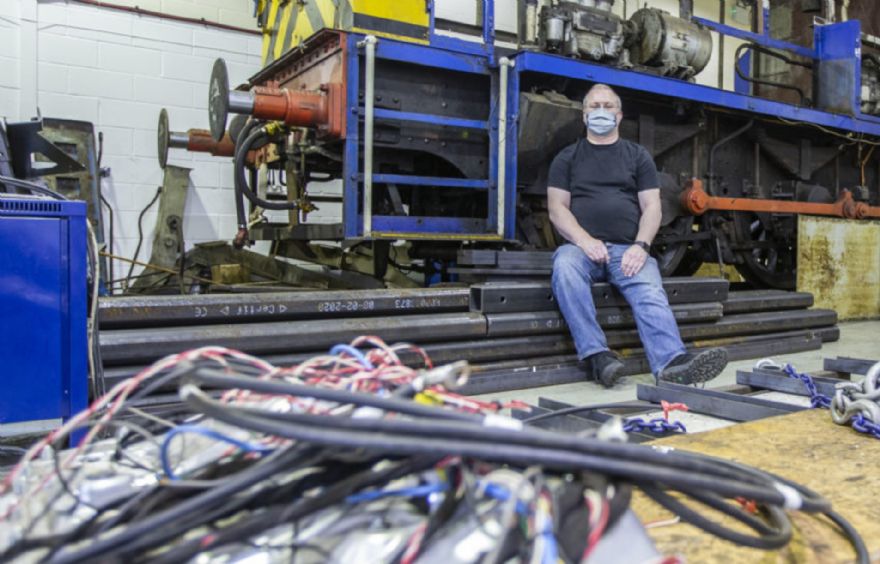
Silverstone Park-based
Meteor Power Ltd’s latest project is on a huge scale – converting a classic 50-ton diesel locomotive to hybrid power. The locomotive, which is around 60 years old, was previously used to shunt the Royal Train at Wolverton, near Milton Keynes.
Later decommissioned, it was considered perfect for Meteor to carry out a hybrid conversion after its proposal was approved and funding agreed by the Department of Transport.
Moving it from Wolverton to
Silverstone Park and then fitting it inside Meteor’s 2,114ft
2 workshop was a delicate process that took one and half days to complete.
Once converted, Meteor founder Mike Edwards says the new 6.8 litre range extender, fitted in place of the original 92 litre diesel engine, will result in a 95% reduction in nitrogen oxides (NOx) and hydrocarbons. Cuts in carbon monoxide and dioxide levels will be similar.
He explained: “Lots of locomotives are still really useful at what they do – shunting rolling stock or delivering freight on the mainline. But there’s a lack of spares and components to keep them going and the overhaul costs can be significant.
“With this project, we have identified the opportunity to drastically reduce emissions and increase the return on investment for businesses with a big saving on fuel usage – between 40% and 60%. That will make a big difference on some of the mainline freight locomotives where the market is so competitive that any profit is often only from the very last wagon.
“We predict this train will leave us towards the end of August before it goes on a three-month trial with a regional passenger rail company that is showing interest in having us convert two more for them.”
Marrying latest electric/hybrid technologies to such a large and dated vehicle has been complex, but the five-strong Meteor team has the necessary expertise.
Mr Edwards continued: “Electrification is the core of our business — between us we have a lot of experience in electronics and software development as well as mechanical engineering.
“With the locomotive, it’s not just about providing propulsion but also added capabilities such as regenerative braking and achieving more precise control of the traction systems.
“The biggest challenge is integration of the traction motors because the designs are from the 1950s. We have had to develop electronics to control these things and a lot of the development has had to be as gentle as possible on the ageing technology.
“It’s an incredibly complicated piece of kit – every motor has two controllers; every box has its own microprocessor. Even the auxiliary power systems, for compressors etc, have their own control system, all feeding back into a central microprocessor. In all, it requires a serious amount of computing power.”
Intricate motors and generators to charge batteries, plus fans to keep those systems cool have also had to be factored into designs. Power will reach around 500 volts with the locomotive continuously using between 500 to 1,000 amps.
The battery to power the locomotive is equivalent in size to four 75kWh Tesla battery packs – that’s 17,664 individual battery cells, each capable of delivering well over twice the power of typical AA batteries.
Mr Edwards added: “We are already looking at converting a 110-ton locomotive with the capability of 70mph speeds, plus a few special projects, including the ability to tow in the region of 2,500 tons of steel. So we will likely be looking for new premises at Silverstone Park for that.
“Silverstone Park is the right location for a company like ours. We have lots of innovative designs but have to convince investors to get behind us – the Silverstone Park name helps.
“You can contact anyone in the world and say we are from Silverstone and they have heard of it; it means something. There is an automatic association with motorsport which is exciting but also cutting-edge technology – they know you are serious.”